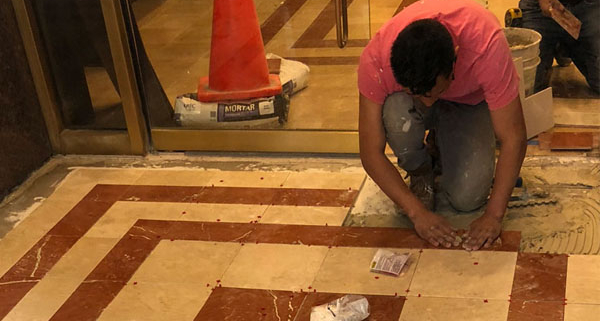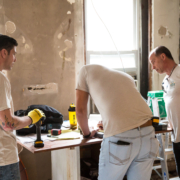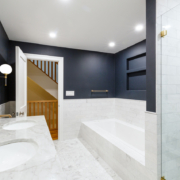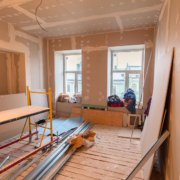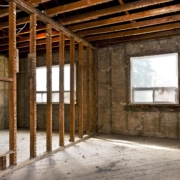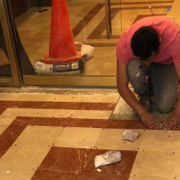The Challenges of Brownstone Renovations in Historical Districts
New York brownstones are more than just buildings; they’re icons. These elegant, historic homes line tree-shaded streets in Brooklyn, Harlem, and beyond, telling stories of the city’s past while providing timeless charm for today’s residents. But as romantic as owning one may sound, taking on a brownstone renovation in historic districts is no simple task.
Renovating a brownstone often means balancing modern comfort with historical integrity. The process involves strict regulations, unique design considerations, and specialized craftsmanship. An experienced interior contractor plays a vital role in guiding homeowners through these challenges while making sure the final result honors both the building’s character and the homeowner’s lifestyle.
Let’s look at the most common challenges of brownstone renovations and how to overcome them.
Navigating Landmark and Preservation Rules
One of the biggest hurdles in a brownstone renovation in historic districts is complying with landmark and preservation laws. In neighborhoods like Brooklyn Heights or the Upper West Side, even minor exterior changes often require approval from the Landmarks Preservation Commission (LPC).
These rules are designed to preserve the architectural integrity of historic areas. That means windows, doors, railings, and even paint colors might be restricted. Homeowners often find themselves surprised by how much oversight exists, from the type of stonework you use to how you repair a cornice.
An experienced interior contractor with knowledge of local regulations can make this process smoother. They know how to work within LPC guidelines, prepare applications, and collaborate with preservation boards to ensure your project stays on track. Skipping this step or ignoring the rules can lead to costly delays, fines, or even having to redo the work.
Structural Surprises Beneath the Surface
Brownstones can be over a century old. While their facades often look charming, what’s inside may be a different story. Rotting joists, outdated wiring, crumbling plaster, and uneven floors are common discoveries once the renovation begins.
These hidden issues are part of the challenges of brownstone renovations because they’re hard to predict until demolition starts. Repairing structural problems often requires more time, more money, and more expertise than homeowners initially expect.
Interior contractors with brownstone experience know how to anticipate these surprises. They’ll build contingencies into the project plan and bring in structural engineers when needed. Addressing these problems isn’t just about compliance—it’s about safety and longevity. A brownstone renovation isn’t truly successful unless the home is as sound behind the walls as it is beautiful on the surface.
Preserving Original Details
One of the joys of brownstone living is the craftsmanship you just don’t find in modern construction, carved moldings, intricate mantels, ceiling medallions, and grand staircases. But restoring these details is one of the most delicate aspects of a brownstone renovation in historic districts.
Stripping paint, repairing plaster, or recreating missing elements requires artisans who understand old-world methods. You can’t just swap in mass-produced materials and expect the home to retain its character. Even something as simple as replacing a window must be handled carefully, since preservation rules often require historically accurate styles.
An interior contractor with a strong network of specialists, woodworkers, plaster artisans, and stone masons can help preserve these features while integrating modern comforts. The goal is to honor the home’s history without sacrificing functionality.
Balancing Modern Upgrades with Historic Constraints
Living in a historic home doesn’t mean you have to live like it’s 1890. Most homeowners want updated kitchens, modern bathrooms, efficient heating and cooling, and reliable electrical systems. But retrofitting these features into a 19th-century brownstone isn’t straightforward.
For example:
- HVAC systems often require ductwork that doesn’t fit neatly into narrow walls.
- Plumbing upgrades can be tricky when working around original beams and joists.
- Electrical wiring has to be expanded to handle today’s technology demands without damaging plaster or woodwork.
These issues are a constant balancing act. You want modern comfort, but you don’t want to destroy historical charm in the process. The best interior contractors know how to design discreet upgrades, such as slim duct systems, radiant floor heating, or carefully concealed wiring, that blend seamlessly with old-world architecture.
Dealing with Limited Space
Unlike sprawling modern homes, brownstones often come with narrow floor plans and limited square footage. Maximizing space while staying true to the home’s historical character is one of the biggest challenges of brownstone renovations.
Interior contractors often rely on creative design solutions to make these homes feel spacious. This might mean:
- Converting unused basement levels into livable space.
- Opening up certain walls while preserving structural integrity.
- Adding built-in storage that matches the home’s original style.
The key is to create functionality without compromising authenticity. Every inch matters in a brownstone, and good planning is essential to make the home feel comfortable and practical.
Managing Costs and Timelines
Renovating a brownstone in a historic district is almost always more expensive and time-consuming than a standard remodel. Specialty materials, preservation requirements, and structural surprises all add to the bill.
Permitting processes in landmark areas can also drag on for months. Delays aren’t uncommon, especially if approvals need multiple rounds. Homeowners often underestimate just how long it will take before construction even begins.
An experienced interior contractor can help set realistic expectations. They’ll provide detailed cost estimates, identify potential roadblocks, and keep communication transparent throughout the project. While challenges are inevitable, proactive planning can prevent them from spiraling out of control.
Coordinating with Neighbors and the Community
Because brownstones are often part of tightly packed rows, renovations can affect more than just the homeowner. Noise, scaffolding, and construction equipment may inconvenience neighbors, and in some districts, community boards or neighborhood associations may have a say in what gets approved.
An interior contractor who has worked on brownstone projects before understands the importance of diplomacy. They’ll communicate with neighbors, follow city rules about noise and work hours, and ensure scaffolding and safety measures comply with regulations. A renovation in a historic district isn’t just about building—it’s about being a good neighbor, too.
Sustainability and Energy Efficiency
Many homeowners today want greener, more energy-efficient homes. But achieving that in a historic brownstone can be tricky. Insulating walls without damaging plaster, installing new windows while meeting preservation rules, and adding solar panels on landmarked roofs are all challenges.
Still, progress is possible. Energy-efficient upgrades can be integrated in subtle ways:
- Insulating roof cavities and basements where regulations allow.
- Installing storm windows that don’t alter exterior appearances.
- Using energy-efficient lighting and appliances that don’t interfere with the building’s historic look.
An interior contractor familiar with sustainable practices can help balance environmental goals with preservation standards, creating a home that feels both timeless and future-ready.
The Importance of Choosing the Right Contractor
Every brownstone renovation is unique. No two homes face the exact same set of challenges. That’s why hiring the right interior contractor is essential.
Look for a contractor who:
- Has experience with historic properties and knows preservation regulations.
- Understands traditional craftsmanship as well as modern building techniques.
- Can coordinate with architects, engineers, and preservation boards.
- Communicates clearly about costs, timelines, and expectations.
Brownstone renovations require a careful mix of art, science, and patience. The right team can make the process less overwhelming and the end result far more rewarding.
Ready to Start Your Brownstone Renovation?
Owning a brownstone in New York’s historic districts is a privilege, but maintaining and modernizing one is a challenge. From navigating preservation rules to uncovering structural surprises, the challenges of brownstone renovations are real. Yet with the guidance of an experienced interior contractor, homeowners can strike the perfect balance between history and modern comfort.
When approached thoughtfully, a brownstone renovation in historic districts doesn’t just preserve a piece of the city’s past; it enhances it for future generations.
At Nest Inc., we specialize in complex renovations that respect the character of historic homes while meeting modern needs. Our team understands the unique demands of brownstone projects and can guide you from permits to finishing touches. Contact us to learn more.

